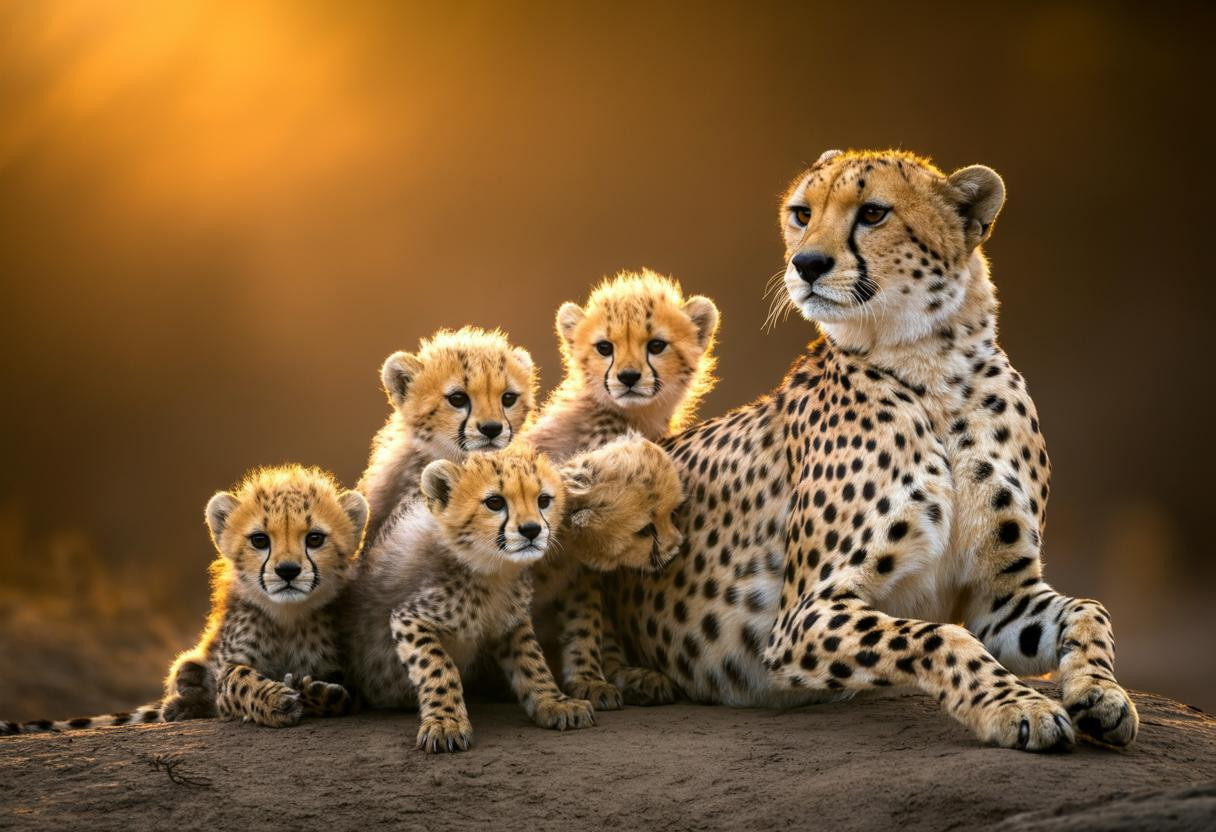Five cheetah cubs born at the Saint Louis Zoo represent more than just adorable additions to the facility—they signal a breakthrough in one of conservation’s most challenging frontiers. These “Cora’s Quints,” as they’ve been nicknamed, arrived after a seven-year breeding hiatus and mark the first successful litter for parents Cora and Vader. What makes this birth extraordinary isn’t just the rarity of a five-cub litter, but the complex genetic orchestration that made it possible.
The science behind this remarkable breeding success
Cheetahs face unique reproductive challenges that make captive breeding notoriously difficult. With fewer than 7,000 cheetahs remaining in the wild, every successful birth carries tremendous weight. The Saint Louis Zoo’s achievement becomes even more impressive when considering that cheetahs typically produce litters of 2-4 cubs, making this five-cub birth statistically remarkable.
The Association of Zoos and Aquariums’ Species Survival Plan strategically paired 4-year-old Cora with 8-year-old Vader based on genetic compatibility analysis. This careful matching process aims to maximize genetic diversity—a critical factor given cheetahs’ naturally low genetic variation, which contributes to their reproductive struggles.
Why this litter transforms cheetah conservation efforts
Breaking the captive breeding barrier
The Saint Louis Zoo has produced over 60 cheetah cubs since 1974, including a record-breaking litter of eight in 2017. However, this latest success demonstrates that first-time parents can achieve exceptional results when optimal conditions align. Recent research into cheetah mate selection, including studies on scent-based preferences, may have informed the pairing strategy that led to this breakthrough.
Genetic diversity gains with measurable impact
Each of these cubs represents a genetic reservoir that could influence cheetah populations for decades. Assuming typical captive cheetah longevity of 10-12 years, their offspring could increase North American zoo populations by 10-15 individuals over two decades. This projection becomes crucial when wild populations continue declining due to habitat loss and human-wildlife conflict.
Revolutionary implications for conservation science
This birth offers unprecedented research opportunities that extend beyond traditional zoo breeding programs. Scientists can now study developmental patterns, behavioral adaptations, and genetic expression in a substantial sibling group—data that’s nearly impossible to collect from wild populations. Understanding how these cubs adapt to controlled environments, similar to how neurological research reveals the brain’s response to natural environments, could inform habitat management strategies worldwide.
The interdisciplinary approach combining veterinary science, conservation biology, and behavioral research creates a comprehensive understanding of cheetah reproduction. Advanced genetic testing and monitoring protocols developed for these cubs may revolutionize captive breeding programs globally.
Practical conservation strategies emerging from this success
Institutional collaboration models
The Saint Louis Zoo’s partnership with the Cheetah Conservation Fund demonstrates how zoo-based breeding supports field conservation. This model could expand to include African and Asian facilities, creating an international network that mirrors natural migration patterns and genetic flow.
Public engagement through education
When the cubs make their public debut later this year, they’ll serve as powerful ambassadors for their species. The zoo’s educational programs, enhanced by these charismatic representatives, can transform visitor awareness into concrete conservation action. This approach recognizes that emotional connections drive conservation commitment more effectively than statistics alone.
Innovative solutions addressing persistent challenges
Future conservation strategies might incorporate space optimization techniques to maximize breeding facility efficiency while maintaining animal welfare standards. Advanced reproductive technologies, including genetic banking and assisted reproduction, could preserve these cubs’ genetic contributions indefinitely.
Cross-institutional data sharing, following methodologies similar to long-term health studies, enables researchers to track breeding program effectiveness across generations and institutions.
The lasting impact of conservation hope
These five cubs represent more than successful breeding—they embody the potential for human intervention to meaningfully support endangered species recovery. Their birth validates decades of research, investment, and collaboration while providing a tangible symbol of conservation success in an era often dominated by environmental challenges. As “Cora’s Quints” grow, they carry the genetic legacy of their species and the hopes of conservationists worldwide.
